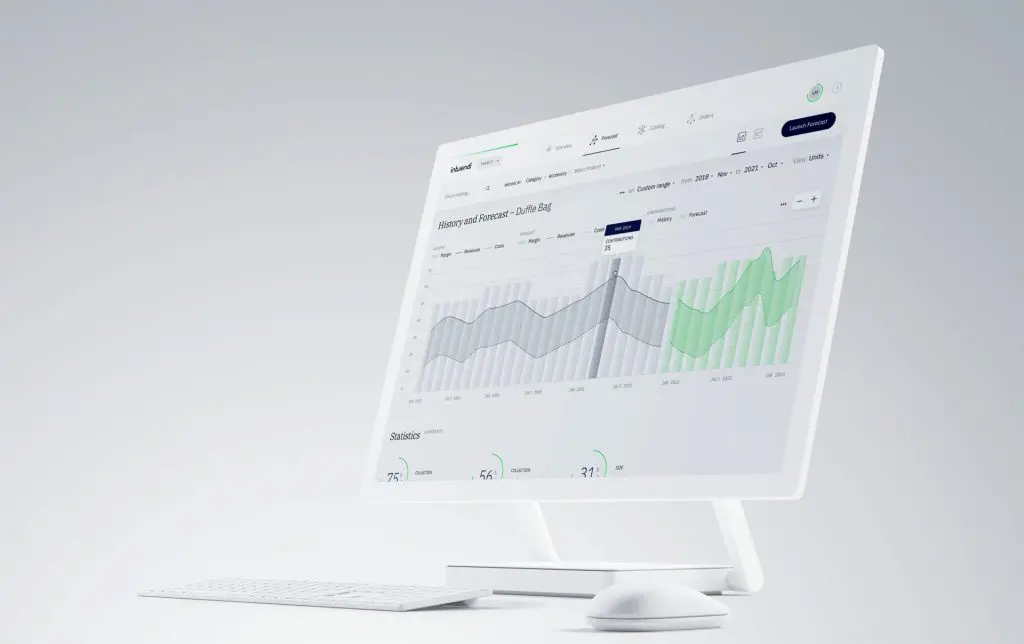Forecast accuracy, aptly named, is the accuracy of a company’s demand and sales forecasting. Helping maintain the correct levels of inventory and bettering stock control, accurately forecasting the demand of one’s consumer base is imperative for business operations to continue successfully. This article will, therefore, be exploring all aspects of forecast accuracy – how it’s measured, how it’s calculated, and why it is so important for the smooth functioning of a business.
What is Forecast Accuracy?
Forecast accuracy is the means of measuring how well a demand forecast has predicted actual outcomes or values of sales. Additionally, forecast accuracy ascertains the reliability and effectiveness of one’s forecasting models and techniques currently in-use. Determining one’s forecast accuracy provides more insight into a company’s market, allowing for more effective decision-making with regard to stock numbers and levels. The future benefit of ensuring that the right amount of inventory is available at the right time helps mitigate any issues that could cause major revenue losses such as over or understocking.
Forecast accuracy is also commonly used across various fields, such as sales forecasting, demand planning, and financial forecasting. In sales forecasting, accurate predictions help organisations estimate future sales volumes, optimise inventory levels, and streamline production processes. Like sales forecasting, demand planning places its focus on stock levels, ensuring the availability of products to meet customer demands without running into excess inventory or stock-out issues. Financial forecasting utilises forecast accuracy to make informed monetary decisions: budgeting, resource allocation, and investment strategies.
Read more on forecasting KPIs in our blog article.
Why do we Measure Forecast Accuracy?
By comparing the predicted values with the actual outcomes, forecast accuracy provides insights into the quality of the forecasts and the level of confidence that can be placed in them. By regularly assessing and improving forecast accuracy, businesses can enhance their planning processes, optimise resource allocation, and make more informed and strategic decisions.
- Reduced Costs: Through avoiding excessive stockpiling or shortage situations, forecast accuracy allows for better monetary management and cost savings. With reliable forecasts and aligning their production and procurement activities with a more accurate expected demand, forecast accuracy helps companies minimise holding costs, obsolescence, and carrying costs associated with over and under-stockings, resulting in reduced costs.
- Improved customer satisfaction: Accurate forecasts play a crucial role in ensuring product availability and meeting customer demands. Accurate predictions of customer needs and demands allow for better resource management, which helps in avoiding stock-outs, and betters planning of production and supply chain activities. Customers are taught to rely on receiving their products in a timely manner, fostering positive experiences and long-term loyalty.
- Effective inventory management, resource allocation, and production planning: Forecast accuracy directly impacts inventory management by providing insights into the expected demand for products or services. Accurate forecasts help in efficient resource allocation, by aligning production, labour, and procurement activities with the projected demand. The predicted inventory levels furthermore dictate how each resource will be used and in which quantities. Additionally, precise forecasts aid in effective production planning, allowing businesses to streamline their operations, avoid bottlenecks, and meet customer demands efficiently.
How is Forecasting Accuracy Measured?
Now that we know why we measure forecasting accuracy, let us look at how it is measured in three different ways.
Mean Absolute Error (MAE): A measure of forecast accuracy that calculates the average absolute difference between predicted values and the actual values. This metric assesses how close the forecast has come to the actual outcomes, regardless of the direction of the errors. It is a straightforward interpretation of the average error magnitude. MAE is calculated by summing up the absolute difference of your forecast and the actual value, divided by your sample size.
MAE = 1/n * Σ |Actual - Forecast|
Mean Squared Error (MSE): MSE is widely used in forecasting as it gives more weight to outliers and larger errors, making it useful when significant errors should be penalised more heavily.
Mean Absolute Percentage Error (MAPE): MAPE expresses forecast errors as a percentage of the actual values. It provides an assessment of the average magnitude of the forecast errors in relation to the scale of the actual values. MAPE is commonly used in situations where percentage accuracy is more meaningful (such as demand forecasting). It is calculated by taking the absolute difference between the forecast and actual values, and dividing this difference by the actual value. To get a percentage form, it is important to multiply this division by 100.
MAPE = 100/n * Σ|Actual - Forecast|/Actual
What is a Good Forecast Accuracy Percentage?
While the goal is always 100%, this can easily be seen as far out of reach. It is thus widely suggested that any percentage north of 70% is a good forecast accuracy percentage. However, this benchmark does have certain factors affecting it, such as industry and demand. Different industries have different demand volatility and complexity. In the finance sector, benchmarks are typically driven by the need for reliable long-term financial projections, thus allowing for a more lenient deviation, between 10 and 15%. However, in retail, where customer demand is constantly changing within a more competitive landscape, the margin for error can be more stringent, at least for best-selling items. Supply-chain, on the other hand, is encompassing multiple industries, thus calling for their benchmarks to be set on industry-specific best practices, historical performance, on-time delivery, fill rate, and inventory turnover.
Why is Forecast Accuracy Important?
Forecast accuracy is a fundamental factor for optimising operations, minimising costs, and meeting customer demands. Accurate forecasts enable businesses to make informed decisions regarding inventory management, resource allocation, and production planning. By striving for precision in forecasting, companies can enhance their overall performance, and therefore better their customer satisfaction rates and competitive edge.
Learn more on how accurate forecasting techniques can help you obtain effective inventory management.






